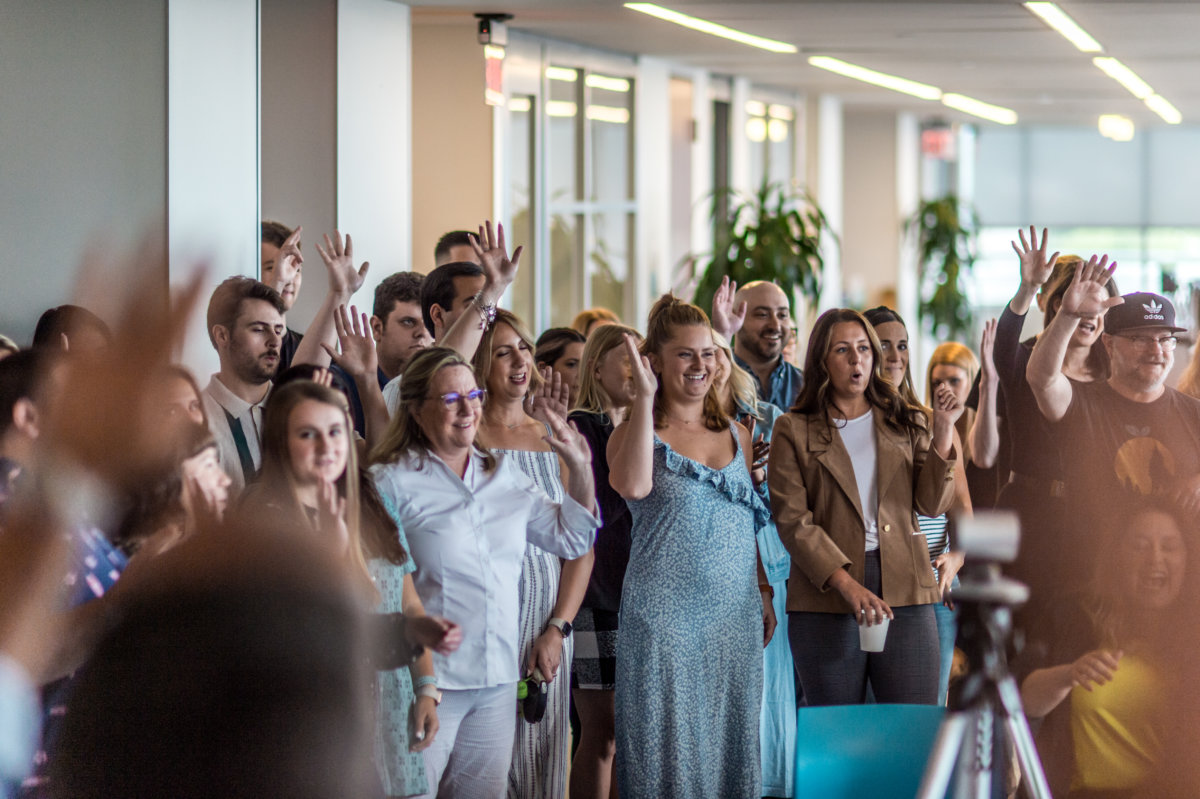Editor’s Note:
Growth and development are important facets of our company culture — not only for our customers — but for our employees as well. Careers at Terakeet are designed to evolve as our employees learn more about themselves, set new goals, and advance their skills. To support advancement and learning, Terakeet has made intentional decisions to invest in our employee resources, training infrastructure, and leadership. This week, we’re excited to talk with Director of Learning and Development, Drew Wood, about how his role will support career advancement. Read the post to learn more about Drew and the exciting work he’s doing in the name of internal growth at Terakeet!
Can you give a brief description of your career leading up to Terakeet?

I have been in the learning and development field for more years than I care to admit to (35 years), and I actually just fell into the field. Like many psychology majors, I was working a retail job, trying to pay off my college loans.
I went from salesperson to manager within a couple of years, and while working in a management role, found that the highlight of my day was teaching and mentoring my staff.
So, when an opportunity opened up in the training department, I jumped at it.
Over my (three and a half decade) tenure in learning & development, I have served in the roles of: Trainer, Training Manager, Director of Training, Learning Consultant, VP of Learning, and Head of Learning.
It’s been an amazing journey of working at various levels, in multiple industries (retail, financial, service, healthcare), both nationally and internationally, all while learning from many interesting and talented people. This brings me to the newest chapter of my career, here at Terakeet.
What does your current role here entail?
If I look at my job description, my current role is to “design, develop and implement the organizational learning strategy for Terakeet. I ensure alignment with strategic business and organizational needs of the company while focusing on increasing the functional, business, and leadership capabilities.”
Quite the mouthful. I like putting things in simple terms.
So, in casual conversation, I would tell you my role entails helping individuals be successful in their personal and professional career growth, enabling managerial and leadership growth (because everybody deserves a great manager), providing education that drives performance through people and establishes a diverse, equitable, and inclusive workplace which reflects our organizational values, and ensuring Terakeet is a learning organization.
As Director of Learning and Development, what objectives are you excited about working on?
I’m so excited about everything that I’m fortunate enough to be working on.
My vision is for Terakeet to be known industry-wide for being an innovative organization that grows and develops its employees… as much as being known as an innovative organization that grows and develops its clients.
Just to give everyone a sneak peek as to my top three priorities:
- I’m currently working with several people from various functions around the organization, moving the needle from good to great and designing a world-class, scalable onboarding experience for all new-hire employees.
- A second priority is to provide multiple-level leadership development, via a Terakeet Leadership Academy, designed to establish and develop leadership skills that solve real business challenges.
- The third immediate priority is building a cohesive and comprehensive organizational learning curriculum that cultivates a genuinely hostile-free, diverse, equitable, and inclusive workplace.
I’m engaging HR along with our employee resource groups (ERGs) and we are all very excited about continuing Terakeet’s journey toward those goals.

What opportunities do you see for internal growth and career development at Terakeet?
I love that career journeys can take many shapes at Terakeet. It’s less of a career ladder and more of a rock climbing wall. Terakeet offers many growth opportunities via various roles in multiple areas of the organization.
For example, working directly with clients or behind the scenes, supporting people or processes, driving results as an individual contributor, or driving strategy as part of the leadership team. And looking ahead, with our business ever-evolving, there will be opportunities for new job roles that we haven’t even considered yet.
My role is to provide best-in-class learning solutions to the organization across all levels while incorporating ‘learning in the flow of work’ mapped to specific job roles and personal skills enabling career growth.
From your perspective, what’s unique about Terakeet’s culture?
Terakeet is a multifaceted people-first culture.
On the business side, we listen to our customers — putting their needs first, creating long-term returns on their investment, acting as a valued partner, and bringing innovation by having the ability to deliver what they want, before they even know what that might be.
On the organizational side, we are agile, collaborative, friendly, inclusive, and generous. We enjoy a flexible work environment and value transparent communication. I love our Friday company-wide meetings where we communicate, educate, and provide a space to recognize and celebrate each other.

And speaking of people-first, I was blown away during my first 90 days of employment, when all of the new hires had opportunities to meet with members of the executive team (Mac Cummings, Pat Danial, Mark Kennedy, and Lynn Fraas). They introduced themselves to us, and took a genuine interest in learning about each one of us. That just doesn’t happen in the business world — especially with an organization our size.
What advice do you have for individuals who want to learn and grow in their careers?
First, be a life-long learner. Even for someone who has worked at their job for five, ten, or 15+ years, there are still things to learn. A process improvement, an additional skill, or a different way of doing something — there are always ways to challenge oneself and improve quality and/or find a way to work smarter vs harder.

Second — do something you feel passionate about. I’m sure most everyone has heard the quote “Choose a job that you love, and you will never have to work a day in your life.” That might be a bit of a stretch, but the premise is sound. We spend way too many hours at work to not enjoy what we are doing.
Finally, be intentional. More people spend time planning for a vacation than they do for their careers. I have an affinity for any and everything on or around the water, so permit me to use an aquatic analogy.
Over my (many) years in business, I have found there to be typically 3 types of what I term “career-boaters.”
The Rowboat, The Sailboat, and The Speedboat
The career-rowboater floats around, goes with the flow, and most often ends up wherever the current takes them. There is minimal planning and effort on their part. They often aimlessly drift from one destination (job) to another. The journey can take quite some time. They hope for a good destination (job/career) but that is mostly dependent upon the current and the weather.
The career-sailboater usually knows where they want to go. Sometimes the wind works for them, other times it can work against them. Getting from point A to point B isn’t always a straight line. They might have to tack from side to side, diagonally upwind. Often there can be several unplanned stops along the journey, which might serve as amazing unplanned destinations within themselves, or simple waypoints to regroup and restart from.
The career-speed boater usually thinks they know where they want to end up. So they put their head down and drive full blast to their destination. Whereas this is the fastest way to their goal, what are they missing along the way?
Each of us has our own unique career journey. Ask yourself what is your desired destination, course, and method of transportation.